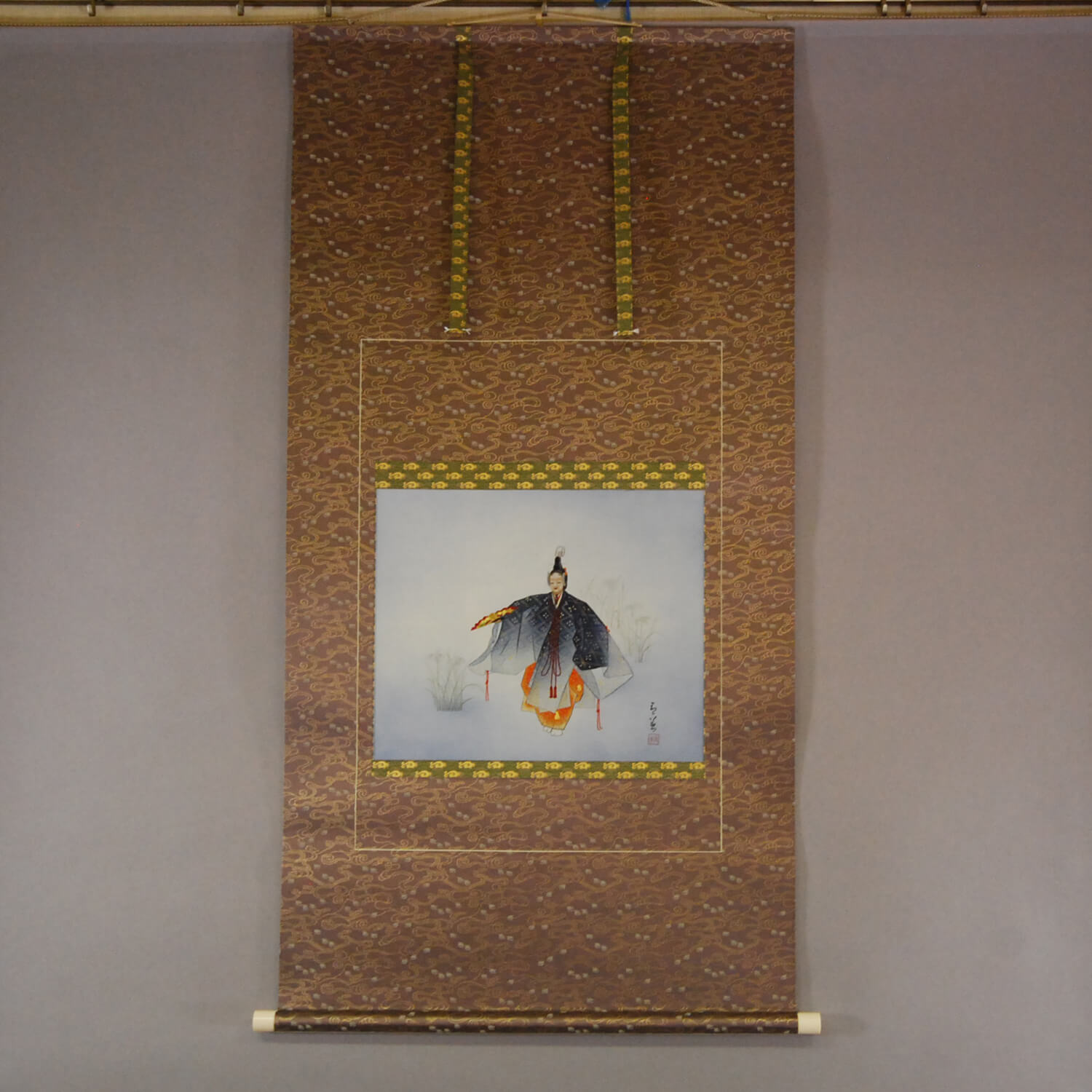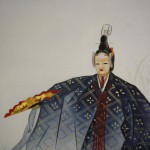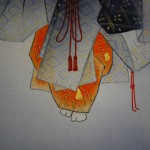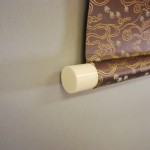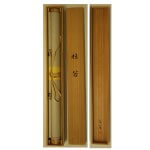Products Lineup
News / Blog
Other Menus
Kakejiku Hanging Scroll: Noh: Kakitsubata / Seibi Saitou - Kakitsubata
- Product ID
- 0168
- Name
- Seibi Saitou
- Profile
1928 –
A Japanese-style painter- Size
- 752mm x 1390mm
- Roller End Material
- Artificial ivory
- Material of the Work
- Japanese paper
- Price
- JPY 180,000
- Stock Condition
- In stock
- Payment: Click the Paypal Mark
- Duty and Taxes
Import duty and taxes are beyond our control and may apply to your shipment. Please noted that these fees are the responsibility of the buyer.
- Description
“Noh” is a theatrical art form that has been handed down through generations and labeled one of the worlds oldest performing arts. It has also been designated as an “Intangible Cultural Heritage” by UNESCO. Noh is a total art form comprised of drama, music and dance elements. While often compared to western opera, the differences can be quite startling. Due to the use of masks in Noh, one can call Noh a “mask drama.”
Noh has enchanted people all over the world through its charms including sharp skills in the art of chanting and dancing, fascinating stories, literary sophistication, and diversity of expression. The accumulated appeal has resulted in the unshakable international reputation of Noh art, registered as an Intangible Cultural Heritage of UNESCO.
This is a painting of a Noh actor performing the play “Kakitsubata” (Iris) by Seibi Saitou, a Noh painting specialist. The climax of Kakitsubata is the elegant dancing scene of an iris fairy. In this painting, the refined and mysterious atmosphere of Noh is expressed very well by his masterful prowess in artistry. This is Seibi Saitou’s masterpiece, which conveys the appeal of Japanese traditional culture.

